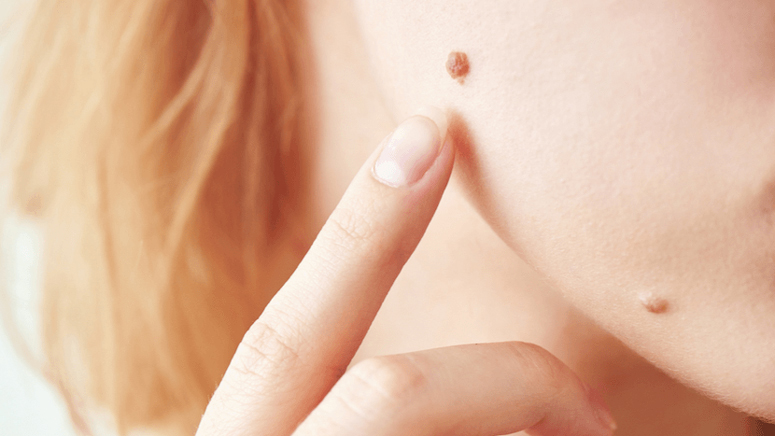Moles and Skin Lesions

The major sign that a person has melanoma is the appearance or change in the appearance of a mole on the skin. While a mole on its own is not sufficient for a diagnosis of melanoma, observing the peculiarities of the mole can help cultivate justified suspicion.
Noncancerous moles or healthy moles differ from melanoma moles, although this may not be obvious immediately. Regular moles are round or oval. They have smooth edges that are typically less than 6 millimeters in diameter, but they can be larger than this.
Melanoma moles can be any size. Doctors usually recommend considering certain factors when trying to distinguish between normal moles and melanoma moles. Called an ABCDE examination [2], the characteristics to pay attention to include:
- Asymmetry: Normal moles have a fairly consistent shape. They are usually either round or oval and are symmetrical. Melanomas are often asymmetrical and irregularly shaped. The two halves of the mole often do not resemble each other.
- Border: Unlike normal moles which often have smooth edges, melanomas generally have irregular edges. The edges of the moles may be ragged, blurred, or notched.
- Color: In many cases, a melanoma mole will have two or more shades or colors. The spot may contain a mix of black and brown or more unusual colors like pink, white, red, or blue.
- Diameter: While healthy moles are generally under 6 millimeters in diameter, melanomas are often bigger than this. Size is not a foolproof metric because healthy moles may be larger than this and melanomas may be much smaller than this.
- Evolution: Healthy moles usually maintain a consistent appearance. If the appearance of a mole on your skin changes in size or appearance within a few weeks or months, it might be a sign of melanoma. Moles that develop a lump, become scaly, or start oozing blood or other fluids should get checked immediately.
This method of examination is useful in detecting melanomas, but not all melanomas will look as described here. Pay attention to spots that look different from the rest of your skin and changes in existing spots.













